We all have that one spot in the yard where nothing seems to grow. We spend a fortune trying to amend the soil to plant the most beautiful flowers, but nothing seems to work. That’s where perennials for poor soil come in.
Rather than wasting money and time attempting to improve the poor soil conditions, simply plant perennials that thrive in that type of soil because they adapt to the conditions as they grow.
It would seem that the rockier the area, the worse the growing situation, but rocky areas are not the only problem gardeners face. Sandy and clay soil also present difficulties when trying to design the landscaped yard of your dreams.
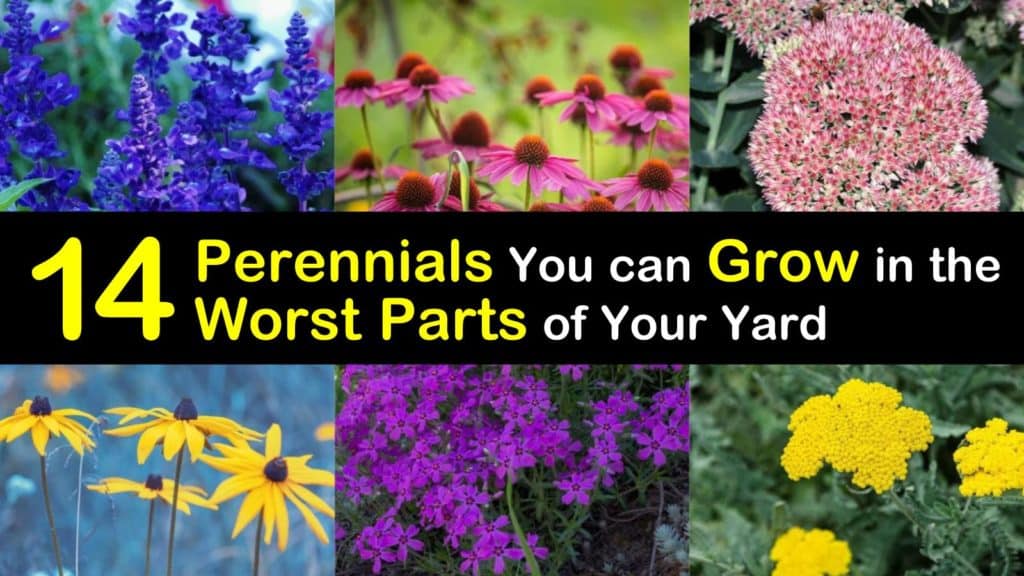
- Planting Tips for Perennials in Poor Soil
- Beautiful Perennials for Poor Soil
- Flowering Perennials for Poor Soil – Autumn Joy (Hylotelephium ‘Herbstsfreude’)
- Purple Coneflower (Echinacea purpurea)
- Salvia (Salvia spp.)
- Hosta (Hosta) – Perennials for Poor Soil
- Creeping Phlox (Phlox subulata)
- Muhly Grass (Muhlenbergia capillaris)
- Colorful Perennial for Poor Soil – Tickseed (Coreopsis)
- Yarrow (Achillea millefolium)
- Daylily (Hemerocallis)
- Black-Eyed Susan (Rudbeckia) – Blooming Perennial for Poor Soil
- Russian Sage (Perovskia atriplicifolia)
- Perennial for Poor Soil Conditions – False Indigo (Baptisia)
- Catmint (Nepeta)
- Cranesbill (Geranium)
Planting Tips for Perennials in Poor Soil
New gardeners struggle more with finding the right perennials to plant in various parts of their yard. With some research, you can easily find annuals, ornamental grasses, shrubs, trees, and perennials for poor soils that won’t just grow in these problematic areas, but they will thrive.
When planting your perennials in poor soil, it helps to amend the soil with compost before planting. The compost provides some much-needed nutrients young perennials require as they become established.
If your plants prefer a more acidic environment than you have, add some coffee grounds for better garden soil. Your perennials will thank you with beautiful blooms.
Most perennials need well-draining soil in full sun for optimal growth. If planting container-grown perennials dig the hole the same depth as the container, but twice as wide.
Gently remove the perennial from the container, place it inside the hole, cover with dirt, and press firmly in place. Bare root perennials require soaking for several hours before planting. Always read planting instructions first.
Fertilizing is vital for all perennials, but even more so for those in poor soil. Fertilizing encourages the perennial to grow as well as bloom.
How often you fertilize your plants depends on their specific requirements but generally speaking, feed yearly at the beginning of spring with a high-phosphorus and low-nitrogen based fertilizer.
To cut back on weed growth and help retain moisture, spread a two to three-inch layer of mulch around your perennials.
Prune plants as required by care instructions and deadhead spent blooms to encourage new blossoms and keep the plant looking happy and healthy.
If your perennials require dividing, do so every three years—divide plants on a calm day and after pruning back about eight inches. Always divide plants at the beginning of spring or the end of fall.

To divide perennials, dig up the root ball and gently separate it into smaller sections. Replant the original and then use the new root balls where desired.
You may occasionally have issues with insects. Take care of gnat larvae in soil, aphids, and other bugs with a neem oil spray or diatomaceous earth.
It is equally important to address getting rid of bugs in houseplant soil, so inspect your indoor plants regularly, too.
Beautiful Perennials for Poor Soil
When it comes to choosing the best perennials for poor soils, think about those perennials we consider weeds, such as common mallow or Asclepias, also known as milkweed.
These hardy perennials grow well in various soil conditions, but there are still many others to choose from.
It’s also important to consider the sun or shade needs of the plants and if you have a problem with wildlife nibbling the growth on your property. Choose deer resistant perennials for shade or sun if these beautiful creatures make a dining table out of your yard.
Depending on your hardiness zone, you may find that some of these plants are flowers that bloom all year or almost year-round.
Flowering Perennials for Poor Soil – Autumn Joy (Hylotelephium ‘Herbstsfreude’)

Autumn Joy is a hybrid of sedum and ice plant. The sedum part of this perennial allows it to grow in diverse soil conditions, including sandy and gravelly soils.
Autumn Joy also tolerates dry earth and thrives in areas where other stuff doesn’t grow if the ground offers good drainage. The ice plant portion of Autumn Joy gives way to succulent type green leaves with a striking resemblance to the Jade plant.
Plant this sedum in full sun for optimal blooming. Pink flowers begin appearing in early fall and give way to bronze to a rust-red color as they open.
Purple Coneflower (Echinacea purpurea)
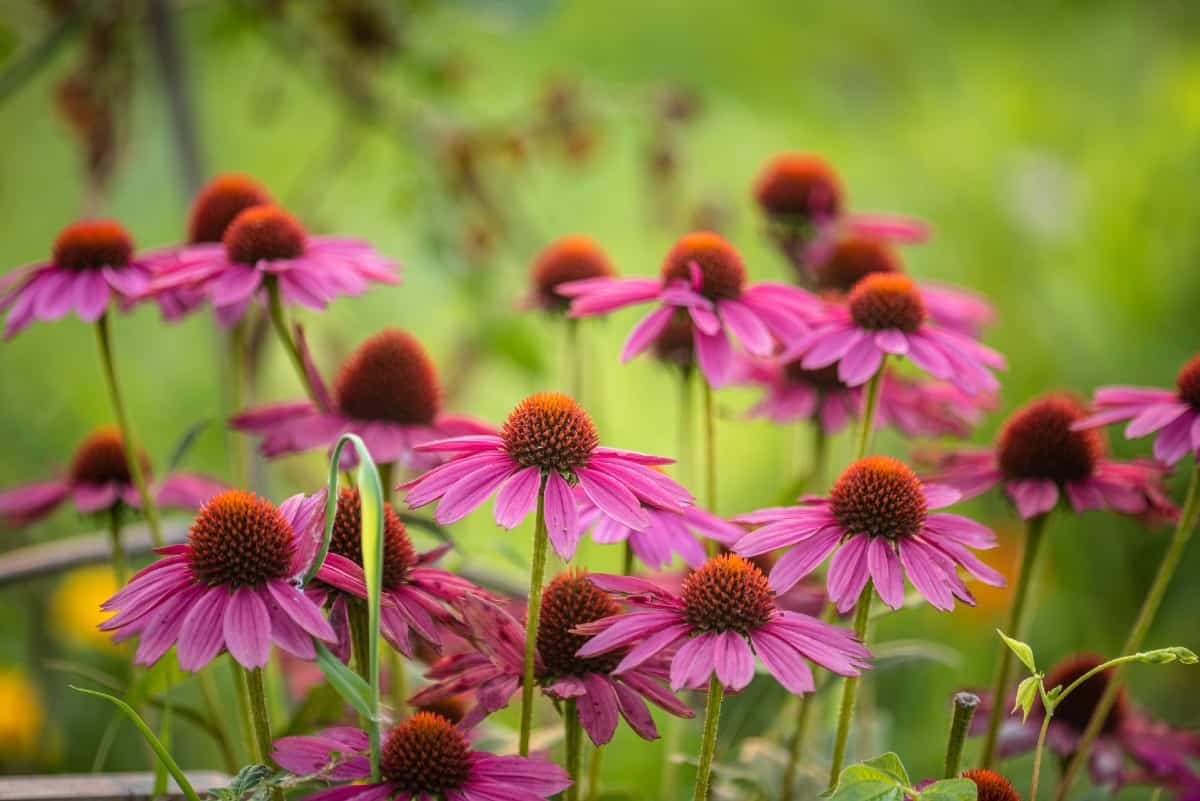
The Purple Coneflower is a popular perennial in most gardens due to its ability to attract pollinators, its long blooming time, and its ability to grow and adapt to the worst soil conditions.
Purple Coneflower belongs to the Echinacea family and is an extremely forgiving plant, making it easier to transplant. The purple flowers bear a striking resemblance to daisies and bloom from late spring to the middle of fall.
After the first blooming period, there is a short rest for the plant before new blooms appear. Plant Purple Coneflower in full sun to partial shade in well-draining soil.
Salvia (Salvia spp.)
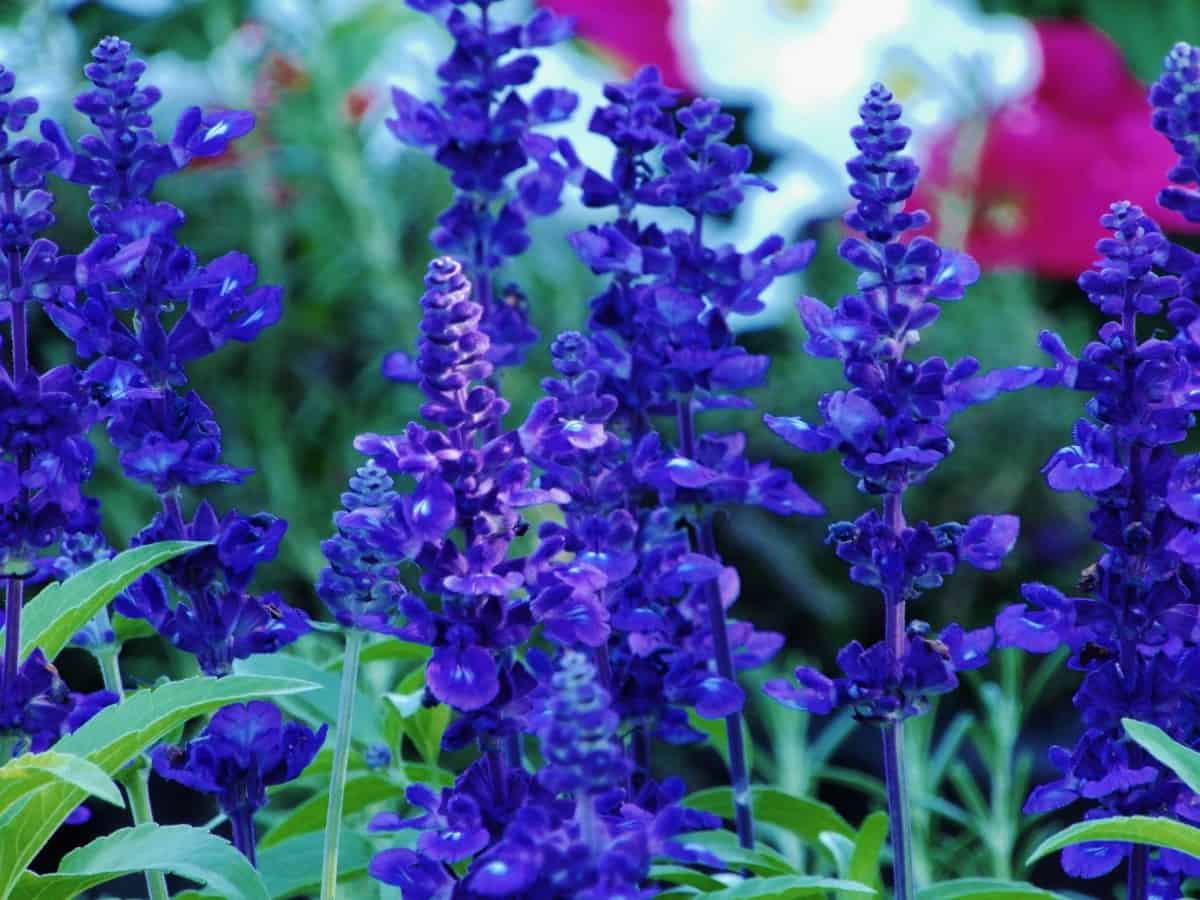
Salvia, which pairs well with Dianthus, is one of the most aromatic plants that grow in a variety of soil conditions as it adapts to the ground it is planted in. Hummingbirds are drawn to the sweet nectar produced by the tubular flowers that grow in colorful spikes.
The aroma from the leaves is strong enough to keep deer and rabbits away. All species of Salvia are drought and heat tolerant, so they do well in many areas.
When choosing their planting locations, opt for a place with full sun and well-draining soil. Salvia reaches anywhere from 18 inches to five feet tall, depending on the cultivator.
Hosta (Hosta) – Perennials for Poor Soil
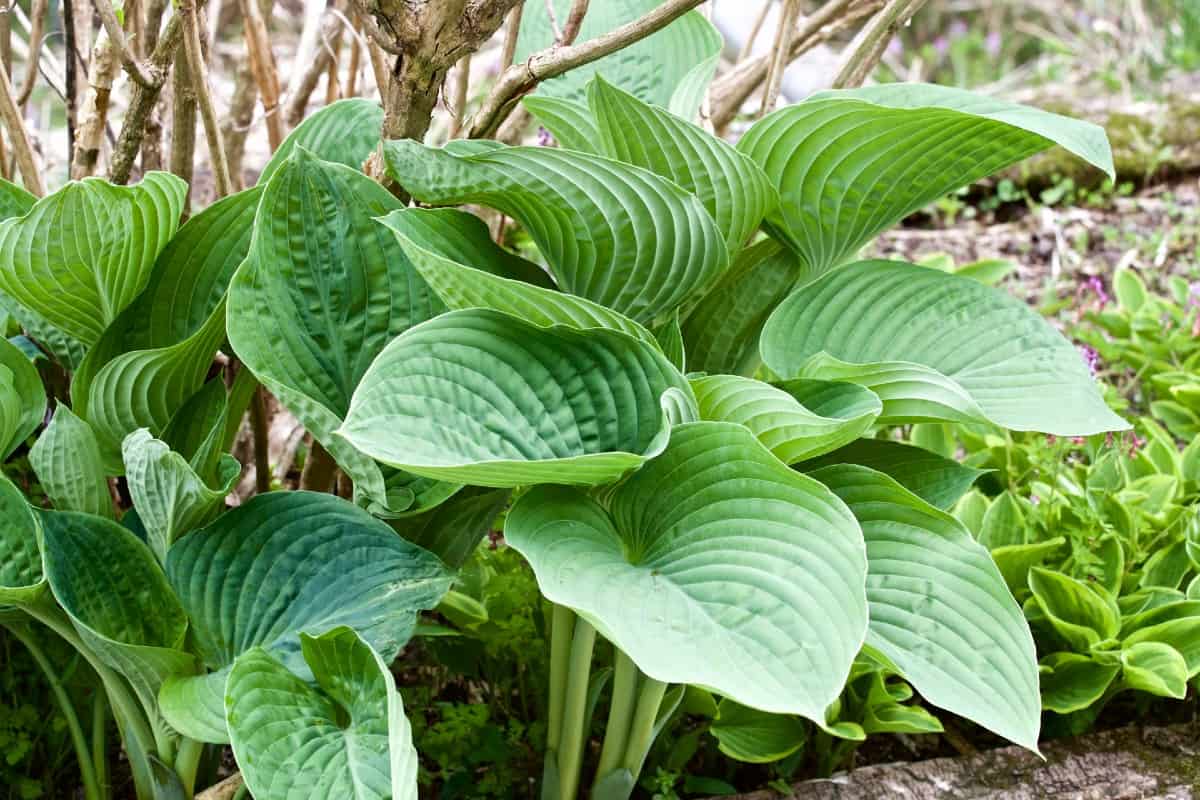
Commonly referred to as a Plantain Lily, Hostas are a popular choice in shade gardens, but some types grow in the worst soil.
The ‘Shadowland Waterslide’ Hosta is an ideal choice for clay soil, but all species are extraordinarily hardy and do well down to zone three. Known for its attractive foliage that holds its color all summer long, plant Hosta in partial to full shade.
If planting in partial shade, choose a planting location with morning sun rather than afternoon sun. Not as known for its flowers as its leaves, Hostas usually bloom in the late summer.
Creeping Phlox (Phlox subulata)
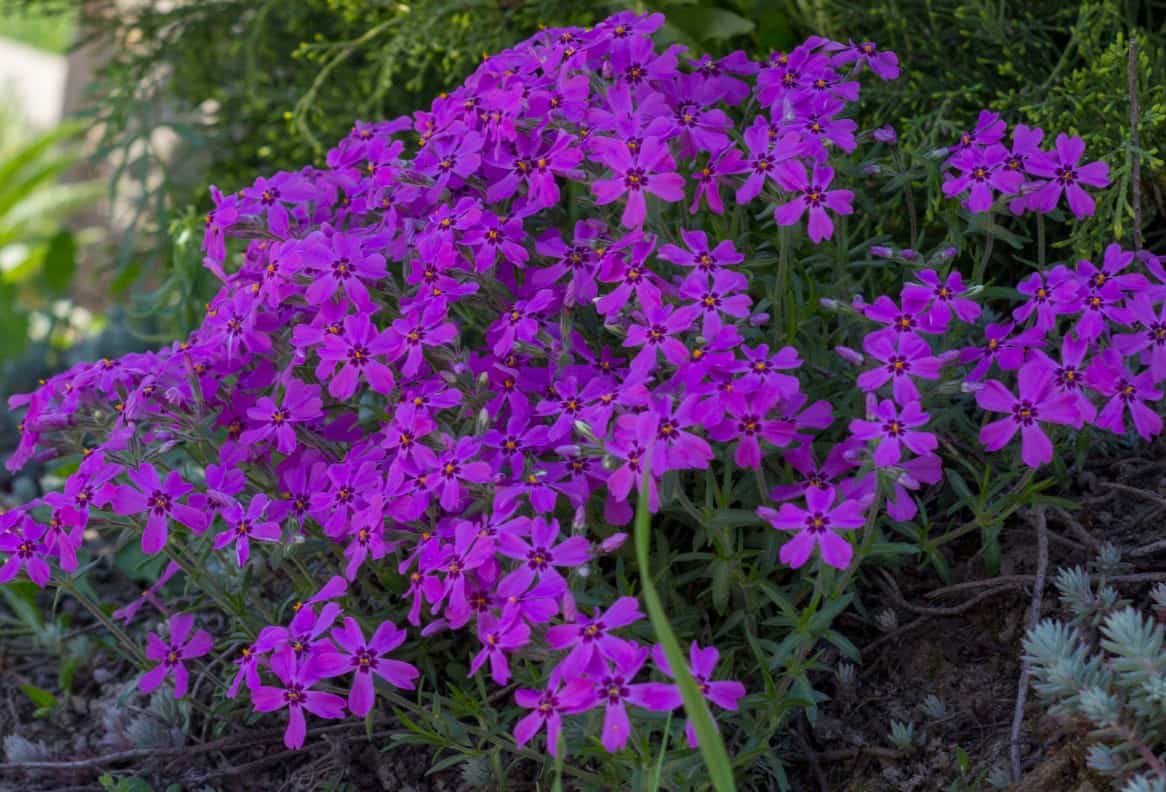
Creeping Phlox works well as a groundcover, and while this herbaceous perennial prefers fertile, well-draining soil, it does well in clay soils, too. To enjoy the densely packed flowers, which drown out the plant’s foliage, plant this groundcover in full sun.
This perennial requires weekly watering but is one of the more drought-tolerant members of the family. The pink blooms of this semi-evergreen show up in the spring and attract butterflies. Creeping Phlox grows about six inches tall with a two-foot wide spread.
Add these perennials for outdoor pathways along the sidewalk or driveway for a nice burst of color.
Muhly Grass (Muhlenbergia capillaris)
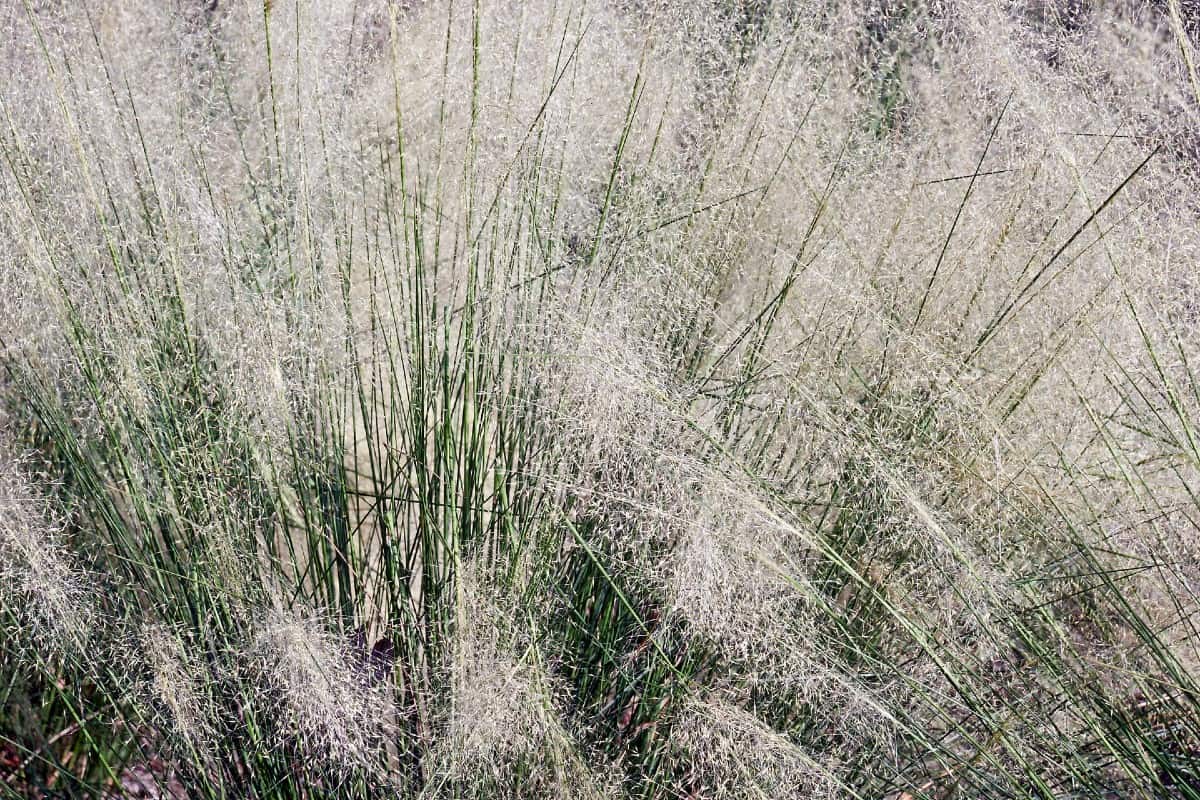
For rocky or sandy soil, Muhly Grass is an excellent choice for those looking for ornamental grasses to add to their landscape. A low maintenance grass, Muhly grows between three to five feet tall in hardiness zones seven through eleven.
The small clumps of grass offer thin fronds paired with pink flowers in the fall. When planting Muhly Grass, regardless of the cultivator chosen, use locations with well-draining soil and plenty of sunlight.
Muhly doesn’t tolerate wet spots, so plant in an area that stays on the dry side. Always check the ground before watering to prevent standing water.
Colorful Perennial for Poor Soil – Tickseed (Coreopsis)
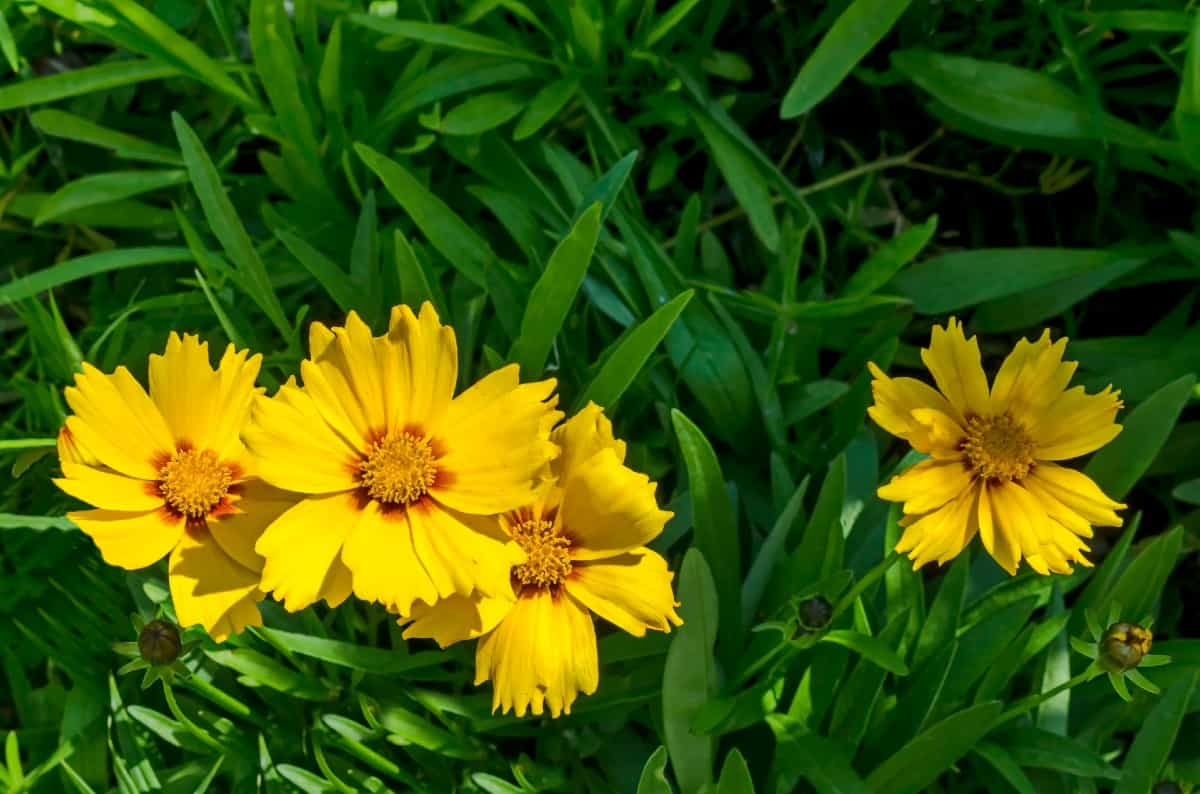
Currently, there are around 80 species of Coreopsis available for gardeners to choose from. For the most comprehensive choice in terms of selection, order seeds from catalogs and check your hardiness zone before purchase.
Plant height ranges from 10 to 18 inches tall with a 12 to 24-inch wide spread. Red, pink, yellow, or orange flowers bloom in the early summer and continue blooming sporadically throughout the fall.
Tickseed does well in sandy, well-draining soil with full sun, but tolerates part shade. Deadheading spent blossoms encourages new blooms to appear.
Yarrow (Achillea millefolium)
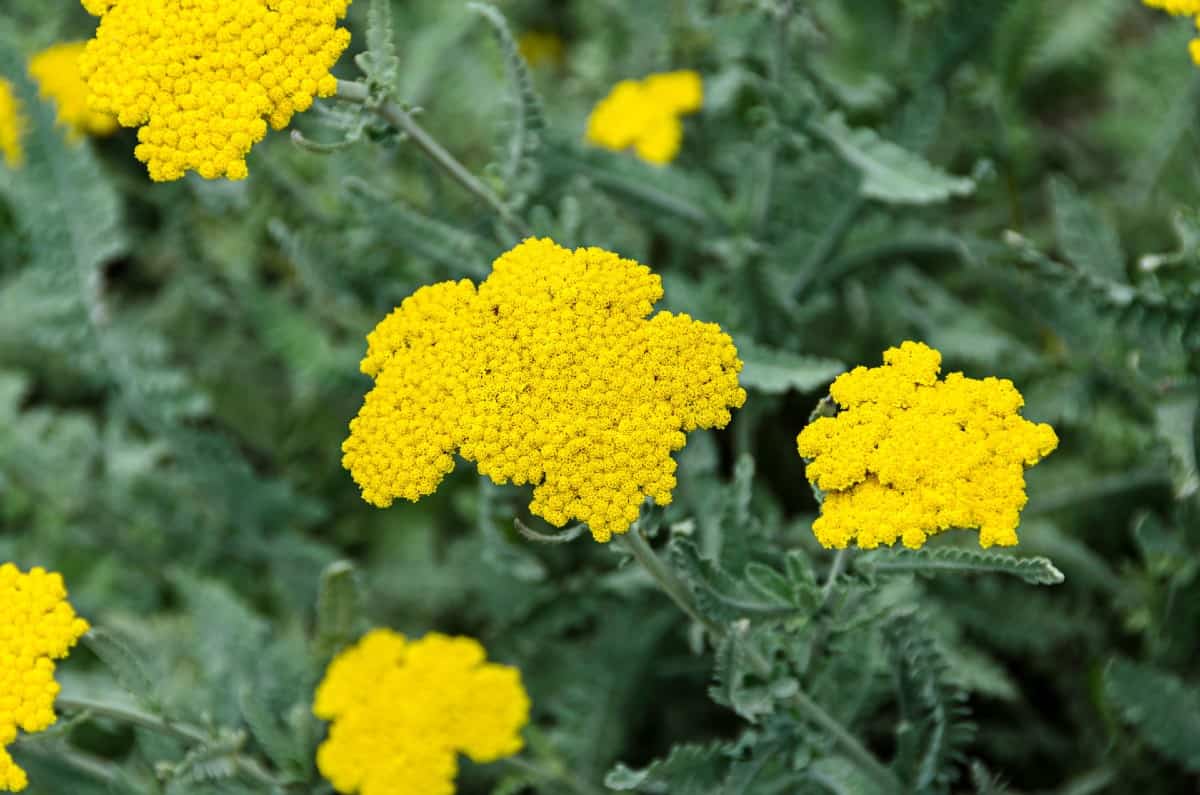
Yarrow requires very little care and is a popular choice for open areas, borders, and ground covers. The showy flower heads form clusters above the fern-like green leaves and make an excellent choice for cut flowers.
Bloom colors vary from pink, red, yellow, and numerous shades in between. Yarrow is one of the easiest perennial flowers to grow and is best planted in the spring or early summer in an area that receives a lot of sun.
When planted in partial shade, Yarrow takes on a leggy appearance. This perennial prefers dry soil, so always use well-draining soil and water only as necessary.
Daylily (Hemerocallis)
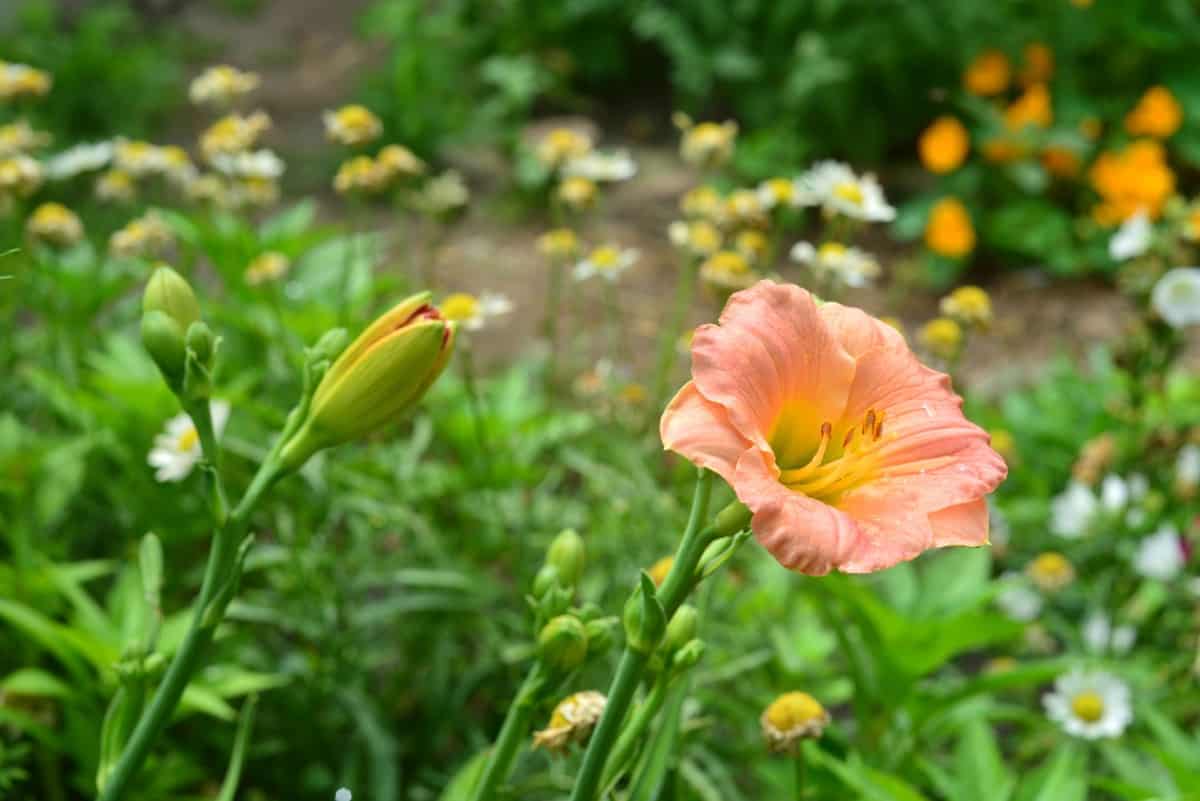
An insect and drought tolerant perennial, Daylily grows well in sunny locations. They tolerate part shade, but for the best flower show, opt for full sun.
Available in a range of colors, including bi-color species, Daylilies offer a range of bloom times, including early, middle, and late. Plant a few of each for season-long color.
When planting any Daylily, consider their mature height, as many reach up to four feet tall. The taller cultivators do best toward the back or middle of flower beds. Always plant Daylilies with room to spread and to encourage more blooms, deadhead spent blossoms.
Black-Eyed Susan (Rudbeckia) – Blooming Perennial for Poor Soil
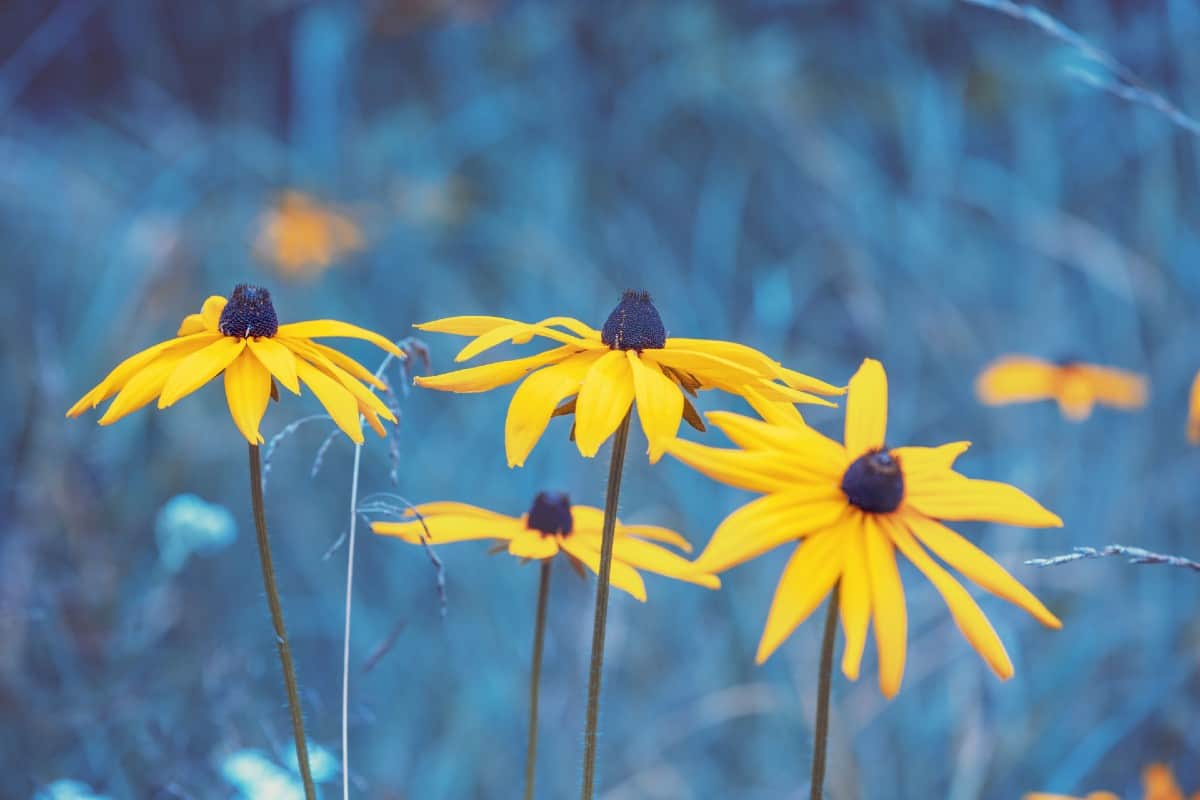
Black-Eyed Susan pairs well with the low-growing Gaillardia, commonly called Blanket Flower, as neither enjoy moist soil.
The Black-Eyed Susan grows up to two feet tall with yellow and orange daisy-like flowers that bloom from early in the summer until sometime in the fall.
When planting Black-Eyed Susan, look for a location with a lot of sun for the best-looking blooms. As a self-sowing perennial, deadhead spent flowers to prevent it from spreading throughout the garden.
These hardy perennials adapt to a variety of soil conditions, as long as it’s well-draining.
Russian Sage (Perovskia atriplicifolia)
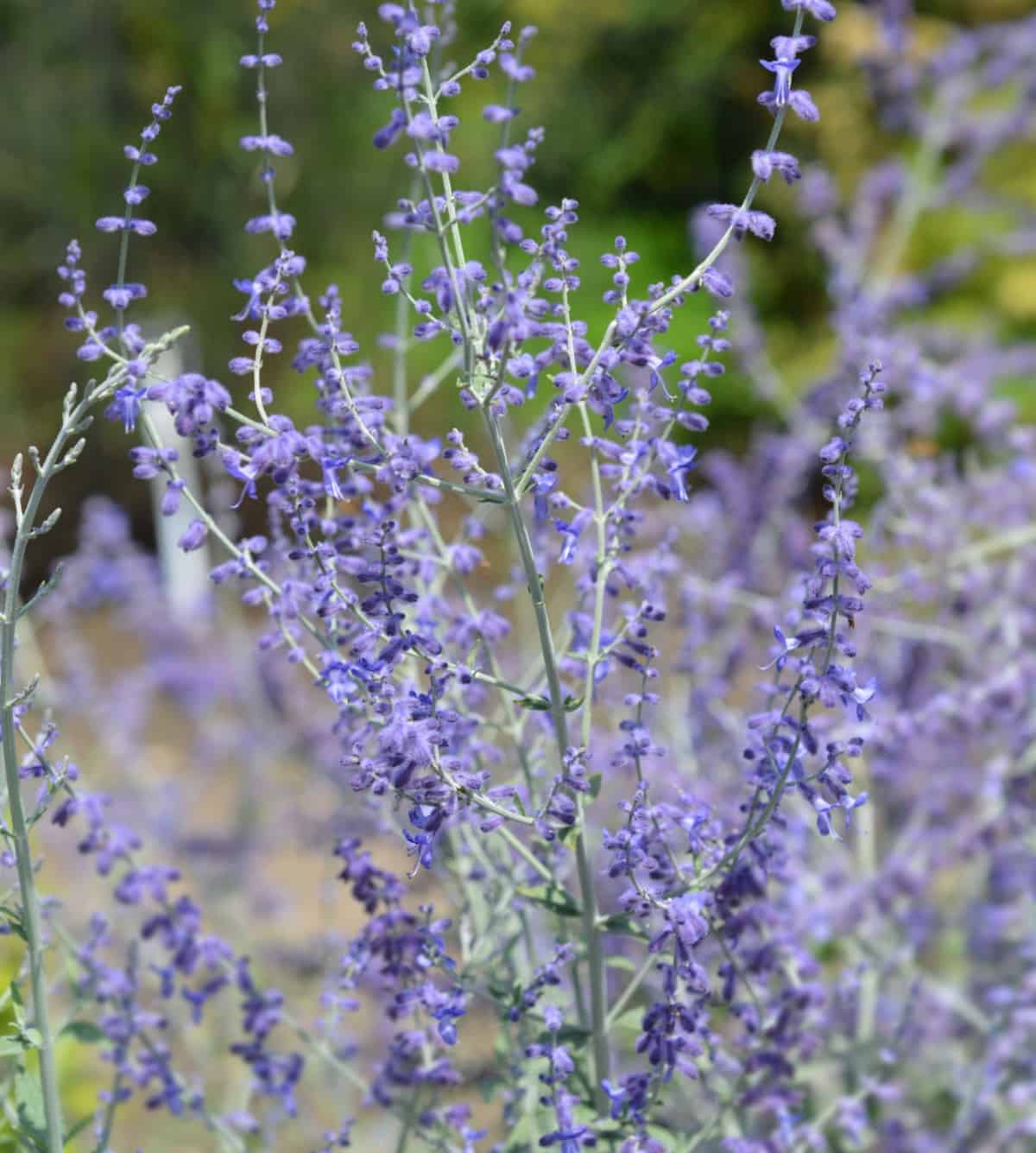
Use Russian Sage to bring color to the worst areas of your yard during the late summer and into the fall. The breathtaking blue-purple flowers appear in the middle of summer, and the bright, eye-catching color remains for several weeks.
The blue-purple flowers pair well with the silvery colored foliage. Typical Russian Sage grows anywhere from three to five feet tall, but dwarf cultivators that grow no more than three feet tall are also available.
Russian Sage is a tough perennial that thrives in dry and hot conditions, so plant these in the sunniest and driest spot of your yard.
Perennial for Poor Soil Conditions – False Indigo (Baptisia)
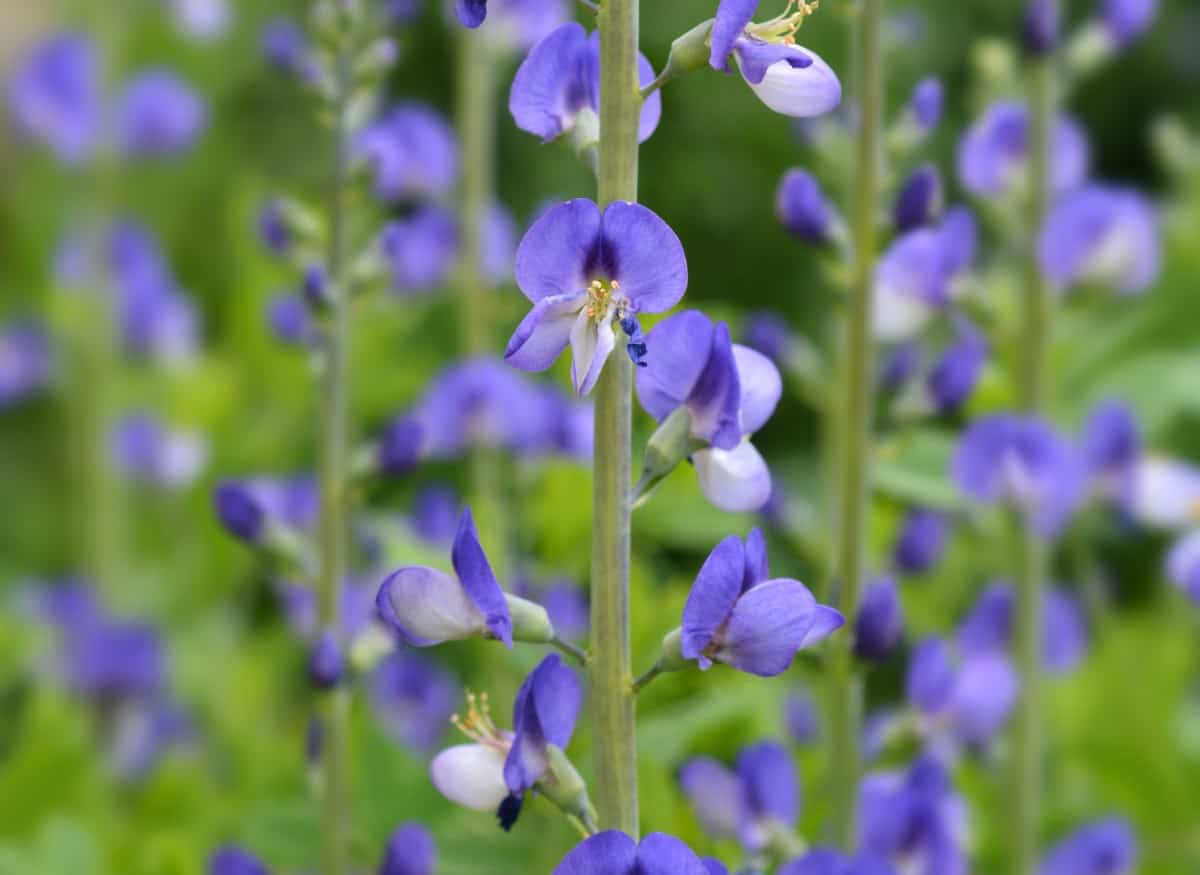
False Indigo is a reliable herbaceous perennial that blooms every spring for years to come. The shrub style perennial grows stalks of white, blue, yellow, or purple flowers that open up in the early spring.
These flowers are set against blue-green foliage with pea-shaped leaves. When choosing a planting location for False Indigo, know it prefers well-draining, sandy soil.
It does not tolerate waterlogged soil and does not like clay. False Indigo thrives in zones three through eight and requires full sun to reach its potential height of four feet tall.
Catmint (Nepeta)
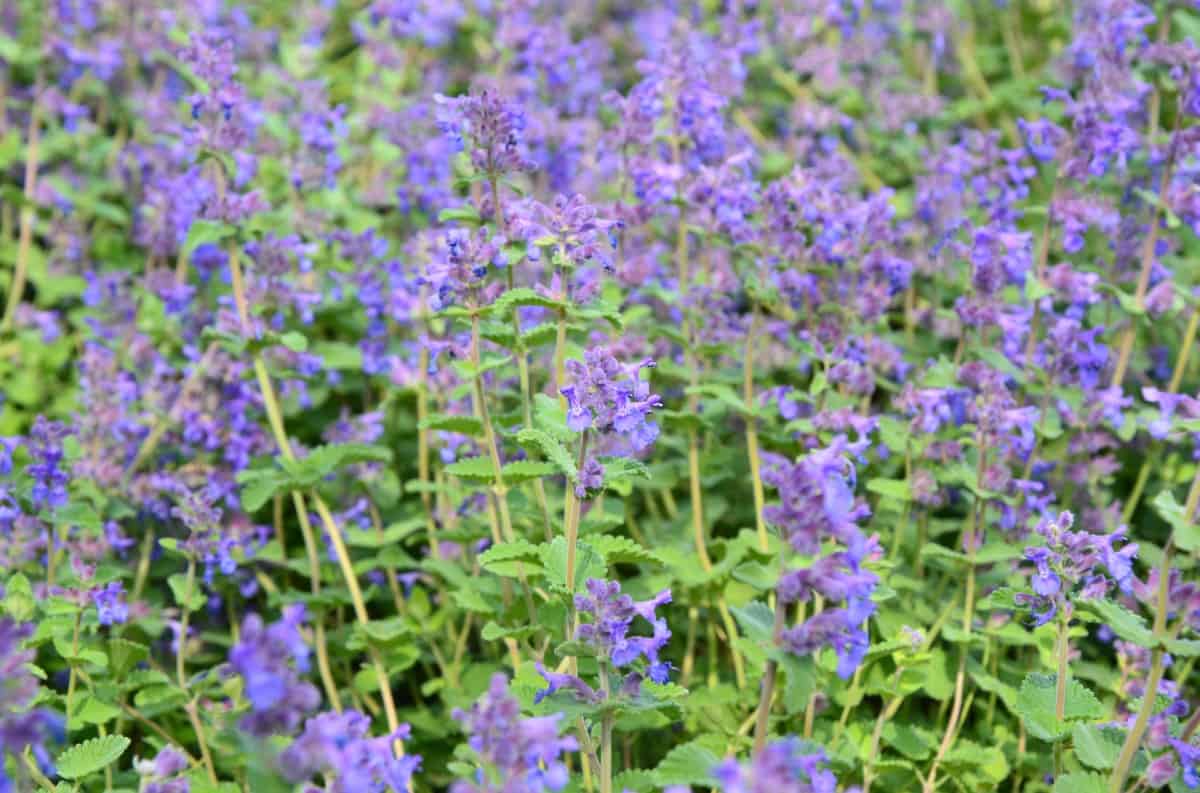
Known for its blue flowers that stand up well under extreme heat and dry conditions, Catmint does well in clay and other poor soils. When flowers are done blooming, cut the plant down by a third and wait for it to bloom again.
Shorter Catmint species reach about 12 inches tall, so they work best as a border plant. The taller species can grow up to three feet tall and do well in mixed beds. No matter the species, plant Catmint in well-draining locations with full sun.
Cranesbill (Geranium)
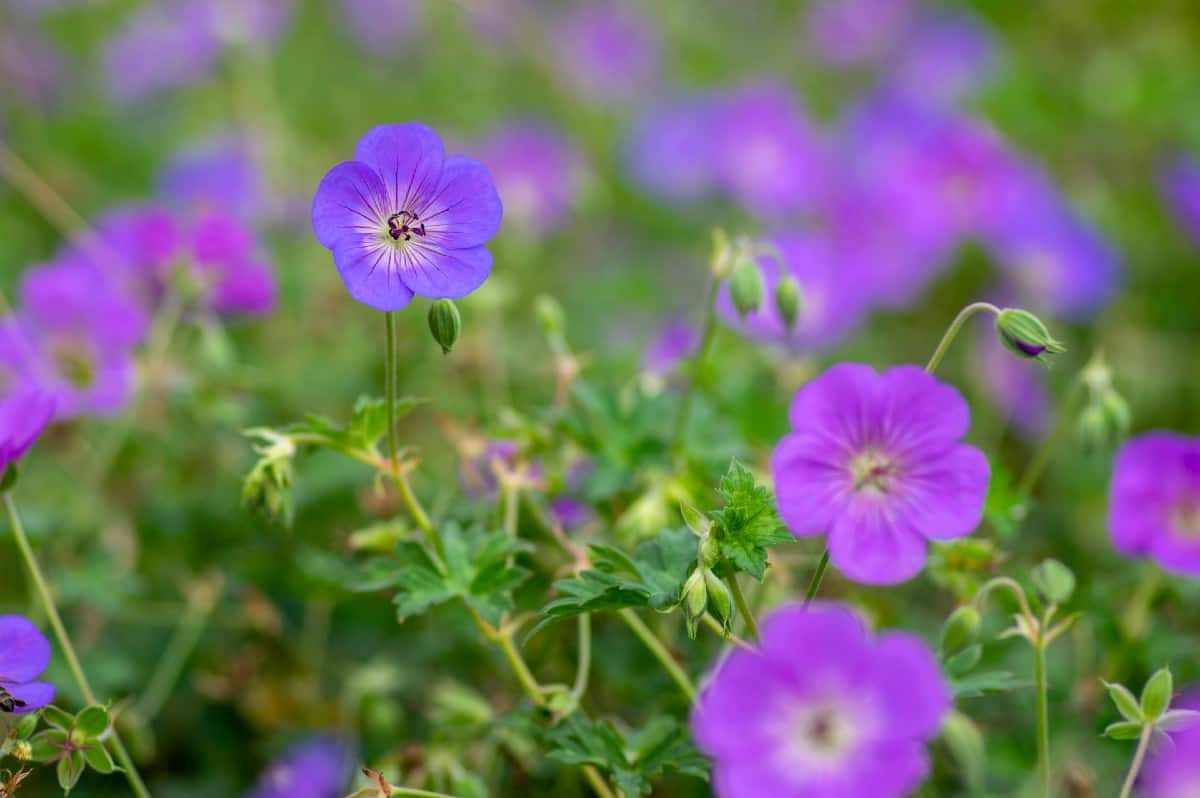
If you are after something for a border plant, consider Cranesbill as it only grows up to a maximum of 24 inches tall. White, pink, lavender or blue flowers appear on the beautiful arching stems in the late spring and remain until the fall.
These stems contain veined green leaves that provide color when there are no bloomers. Cranesbill thrives in zones five through nine and, once planted, quickly spreads to cover a large area.
This perennial grows well in clay soils but does require excellent drainage and full sun for optimal growth. Blooming does occur in partial shade but is not the same as when in full sun.
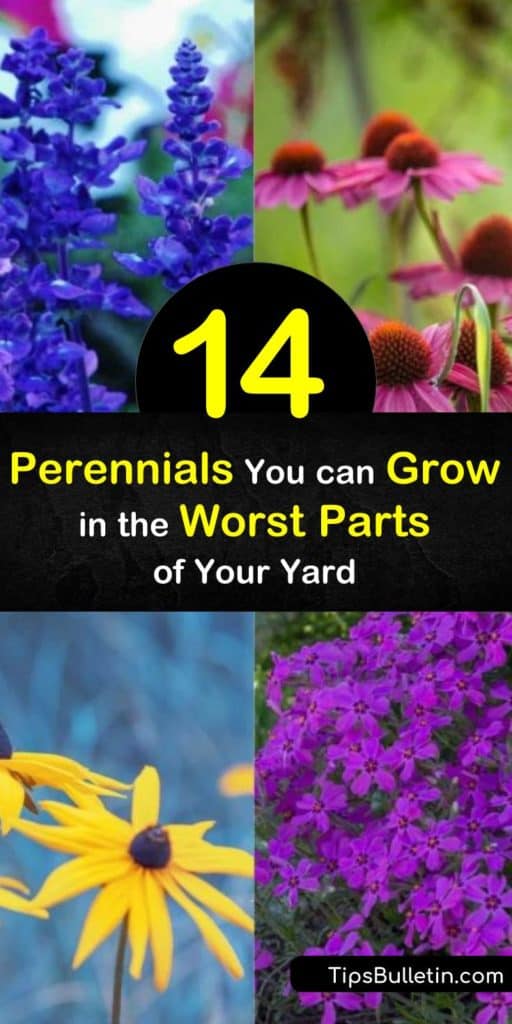
Thank you for taking some time to read about the different perennials that grow in the worst soil conditions. If you found our suggestions helpful on what perennials to use in poor soil, please share our thoughts on perennials for poor soil with others on Facebook and Pinterest.